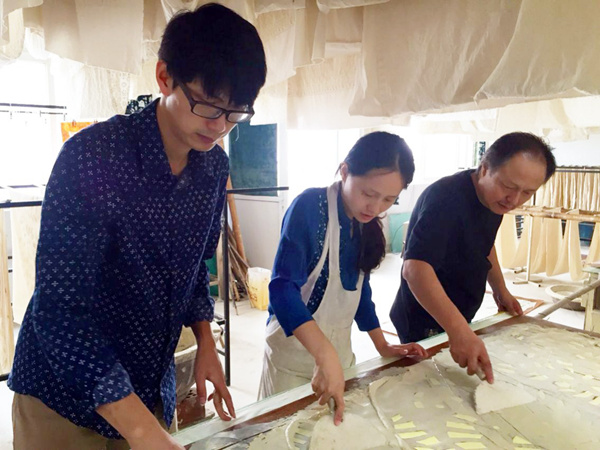

"The patterns on the cloth are formed by small dots and short lines," Masa Kubo, a Japanese woman who opened a blue calico museum in Shanghai in 1990, once wrote in an article. "The dots and lines are different in shape, size and thickness, and their combination forms patterns like lions, peonies and cranes.
"Although it's a single-color dyeing, it seems to contain rich colors."
But patterns we see today are reducing in number. "Those who still keep blue calico are mostly old people, who used it when they were younger," Ni says. "But tradition means that when they pass away their relatives will burn the clothes they used. That is why many old patterns are disappearing."
As a result, Ni and his family members have traveled to the main producing areas of blue calico to collect such patterns.
Several years ago, they went to a town in Rugao city, Jiangsu province, and visited the home of a 103-year-old woman. When they asked her if she had blue calico, she didn't understand. But when they showed her a photo on the cellphone, she nodded, opened a box, and drew out a very old piece from the bottom.
To Ni's delight, thanks to such people as this elderly woman, their collection became larger.
"After hearing news about our search for old blue calico patterns, some old people visited our museum. They donated their blue calico to us, or asked their children to send it to us," says Ni.
Over the years, they have collected tens of thousands of works, categorizing them into different groups, and published a book on patterns of blue calico.
Wu Yuanxin paid special attention to researching the craft, and established an institute dedicated to it under the auspices of Nantong University. With that platform, they have undertaken a number of academic projects studying topics like the development of the craft, and its link with other crafts.
In 2012, Ni opened a selective course of blue calico craft at Nantong University and Nantong Open University, and gave lectures. Ni also launched experiential activities in a number of universities, middle and primary schools.